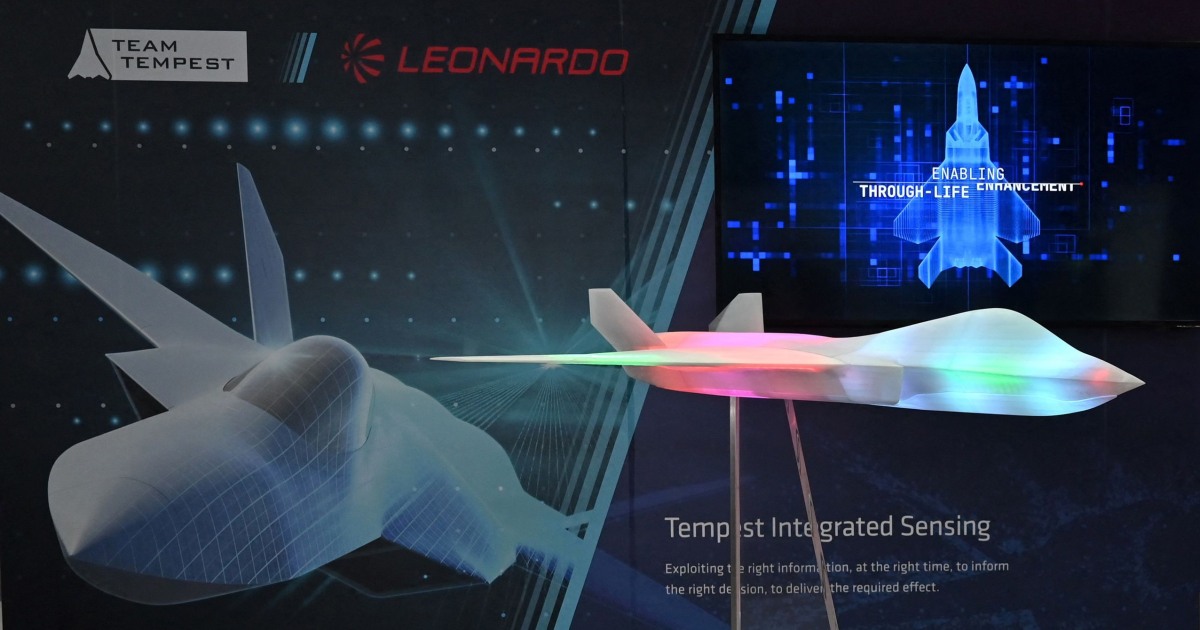Japan, Britain and Italy are merging their next-generation jet fighter projects in a ground-breaking partnership spanning Europe and Asia that is Japan’s first major industrial defense collaboration beyond the United States since World War II.
The deal aims to put an advanced front-line fighter into operation by 2035 by combining the British-led Future Combat Air System project, also known as Tempest, with Japan’s F-X program in a venture called the Global Combat Air Programme (GCAP), the three countries said in a statement on Friday.
Against the backdrop of Russia’s invasion of Ukraine and intensifying Chinese military activity around Japan and Taiwan, the agreement may help Japan counter the growing military might of its bigger neighbor and give Britain a bigger security role in a region that is a key driver of global economic growth.
“We are committed to upholding the rules-based, free and open international order, which is more important than ever at a time when these principles are contested, and threats and aggression are increasing,” the three countries said in a joint leaders’ statement.
Amid what it sees as deteriorating regional security, Japan this month will announce a military build up plan that is expected to double defense spending to about 2% of gross domestic product over five years.
British Prime Minister Rishi Sunak separately said his country needed to stay at the cutting edge of defense technology.
“It means we can keep the country safe from the new threats that we face, it also adds billions to our economy and supports tens of thousands of jobs across the country,” Sunak, visiting an air force base in eastern England, said of the deal. “It’s also good for our international reputation”
Britain’s BAE Systems PLC, Japan’s Mitsubishi Heavy Industries and Italy’s Leonardo will lead design of the aircraft, which will have advanced digital capabilities in artificial intelligence and cyber warfare, according to Japan’s Ministry of Defence.
European missile maker MBDA will also join the project, along with avionics manufacturer Mitsubishi Electric Corp . Rolls-Royce PLC, IHI Corp and Avio Aero will work on the engine, the ministry added.
The three countries, however, have yet to work out some details of how the project will proceed, including work shares and where the development will take place.
Britain also wants Japan to improve how it provides security clearances to contractors who will work on the aircraft, sources with knowledge of the discussions told Reuters.
Other countries could join the project, Britain said, adding the fighter, which will replace its Typhoon warplanes and complement its F-35 Lightning fleet, will be compatible with fighters flown by other North Atlantic Treaty Organization (NATO) partners.
Confirmation of the plan comes days after companies in France, Germany and Spain secured the next phase of a rival initiative to build a next-generation fighter that could be in operation from 2040.
Asked about the potential for the British, Japanese and Italian project to join forces with the rival European project in future, Woodburn said it was a possibility.
“I wouldn’t rule out one thing or another. At the end of the day, these are political decisions,” he said.
The United States, which has pledged to defend all three countries through its membership of NATO and a separate security pact with Japan, also welcomed the joint Europe-Japan agreement.
“The United States supports Japan’s security and defense cooperation with likeminded allies and partners, including with the United Kingdom and Italy,” the U.S. Department of Defense said in a joint statement with Japan’s Ministry of Defense.
Japan had initially considered building its next fighter with help from U.S. defense contractor Lockheed Martin Corp, which had proposed an aircraft that combined the F-22 airframe with the flight systems from the F-35 fighter.
Share your story or advertise with us: Whatsapp: +2347068606071 Email: info@newspotng.com












